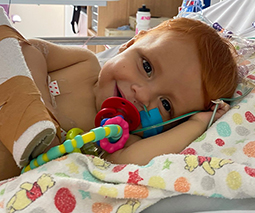Silent reflux in babies: Everything you need to know

Silent reflux is a common condition in babies that is often difficult to diagnose. Unlike the more common reflux, a baby with silent reflux may swallow before they vomit, or the milk may not even make it as far as their mouth. There is no familiar vomiting, meaning that the reflux is concealed and thus “silent”.
What is silent reflux?
Laryngopharyngeal reflux (LPR) or silent reflux can present in babies between around six weeks to five months of age.
Silent reflux occurs when stomach acid flows back up into the oesophagus and irritates the throat. It can cause discomfort, a cough or a sore throat in a baby. It can also prevent babies from putting on weight.
Sometimes a baby will make a sound that mimics reflux, but no milk presents, making it hard for parents to realise that reflux is occurring.
The acidic reflux can burn on the way up and again on the way down, delivering a double whammy to the poor baby who is suffering with the condition.
A baby with silent reflux may cry during or after a feed without any obvious reason. They may also grimace or wince as they deal with the acidic reflux milk.
Other babies don’t appear to be worried by their silent reflux at all, making it even more difficult to diagnose.
Symptoms of silent reflux
- Sudden bouts of crying
- Being grizzly during or after feeds
- Coughing
- Sour breath
- Milk in mouth between feeds
- Breathing irregularities
- Wet-sounding burps
- Frequent hiccups
- Failing to gain weight
- Difficulty feeding
- Hoarse or croaky voice
Silent reflux is a condition can be stressful for parents and babies alike. Babies may be uncomfortable and find feeding difficult.
Parents may have trouble translating what’s making their baby unhappy and feel exhausted, frustrated or inadequate, which means it’s important to seek support as soon as possible.
Silent reflux can lead to other complications like ear problems, respiratory infections, stomach ulcers and damage to vocal chords, so it’s vital to take it seriously.
Tackling silent reflux
To help avoid silent reflux, hold your baby upright as you feed her and burp or “wind” her often during feeds. This can sometimes alleviate symptoms, but not always.
Shorter, smaller feeds can sometimes help, as can dietary changes in breastfeeding mums and, in some cases, medication or even corrective surgery.
If you suspect silent reflux in your baby, seek support from your Maternal Child Health Nurse or trusted medical practitioner.
It’s important to not tough this out on your own as helpful treatment and advice awaits.
 Need some more feeding advice? Our Parent School lactation experts can help. Click to find out more or book a one-on-one session.
Need some more feeding advice? Our Parent School lactation experts can help. Click to find out more or book a one-on-one session.












